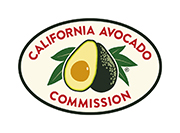Common Mistakes When Planting Young Avocado Trees
Planting California avocado trees generally takes place beginning in February, so Dr. Ben Faber recently shared planting advice based on common mistakes he sees in groves. Below is a summary of his observations.
The most common mistakes Dr. Faber sees in California avocado groves are trees that are either planted too deeply or trees planted with soil amendments that result in the tree settling. In both cases, these mistakes result in the trees’ graft unions being covered with soil and the plants failing as a result.
While it may seem beneficial to add manure, peat moss, compost, planting mixes or mycorrhizal inoculums when planting new avocado trees, Dr. Faber recommends against it. As regards mycorrhizae, these beneficial fungi are naturally present in abundance and the expense of adding nursery-grown spores is not worth it.
As for adding soil mixes and/or organic matter to a planting hole, doing so tends to create a discontinuity of soils — the native soil versus the amended soil — that can lead to poor water movement, poorly adapted roots and lead to soil settling that will bury the bud union. Envision a plant within a container: the roots circle the edge of the container and then grow back toward the potting soil. When a new tree is planted in a hole filled with amended soil, the roots of the tree behave like those of a potted plant and choose the more optimal (amended soil) environment. Thus, the roots of the tree will not establish properly in the native soil because it is more finely textured, less aerated and has fewer nutrients.
The different characteristics of the amended and native soils also impact water movement. Water will wick away from the porous amended soil and when rain levels are low — in summer, for example — the water in the amended soil will be quickly absorbed by the roots and not be replaced by water in the native soil where the liquid is held more tightly. A “bathtub effect” also can be created during irrigation with water accumulating in the amended soil as it waits for water to drain more slowly from the native soil.
Finally, as the organic additives decompose, the soil will settle and the trunk can easily sink and bury the bud union.
To avoid the above-noted complications, Dr. Faber recommends against adding planting mix, amendments and mycorrhizae. Below are recommended planting steps.
- Dig a hole two times wider than the root ball and the same depth as the root ball. Do not put gravel in the bottom of the hole — it exacerbates drainage.
- Gently tamp down the native soil around the tree to eliminate air pockets and break up any clods of soil. Avoid covering the root ball as it is best for water to come into direct contact with the root ball.
- Water the tree as soon as possible after planting.
- Place drip emitters close enough to the tree such that the water lands directly on the root ball. After 4-6 months, move the emitters 6-8” from the tree.
- Irrigate newly planted trees very 5-10 days with 2-5 gallons of water for 2-4 months.
- If you are planting in root rot affected soils, trees will benefit from being planted on a berm or mound and adding gypsum (15 pounds per tree), mulch and fungicides around the tree.
- If mulch is applied around the tree, it should not be placed against the trunk.



